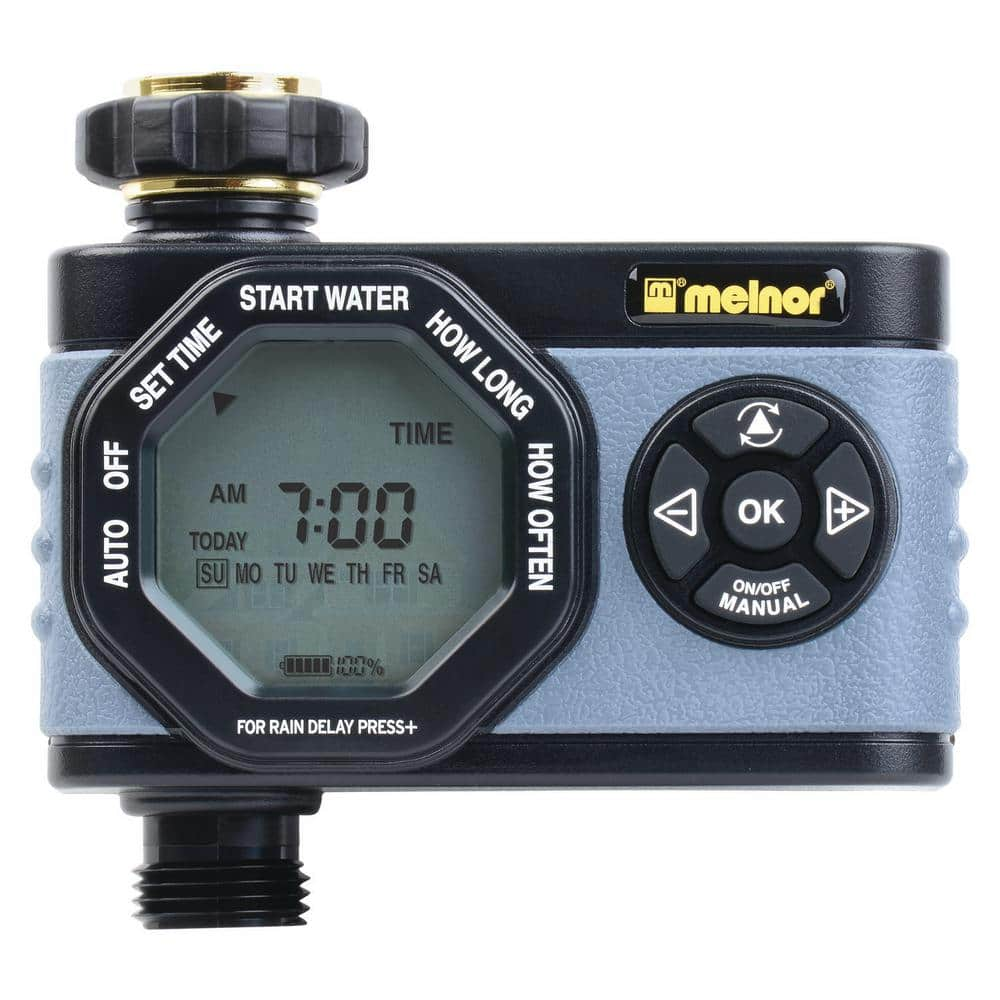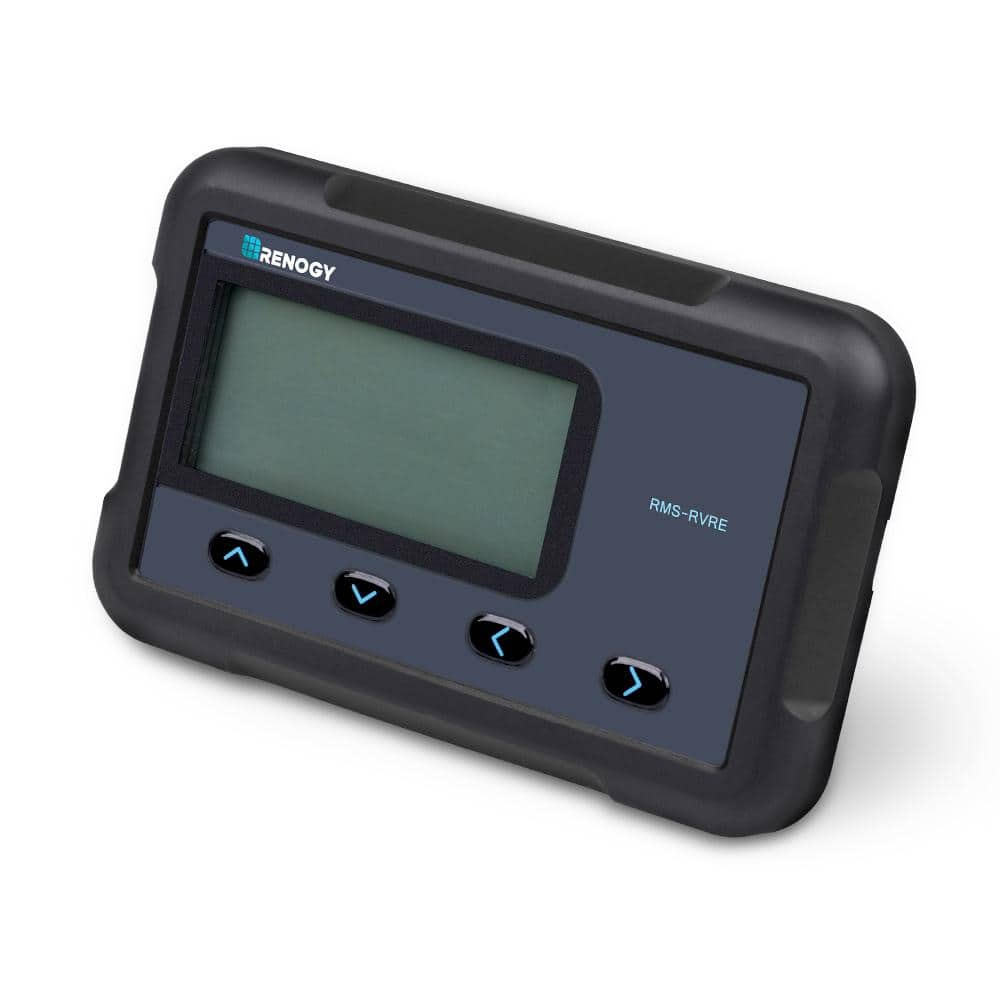How to Choose an Irrigation Timer
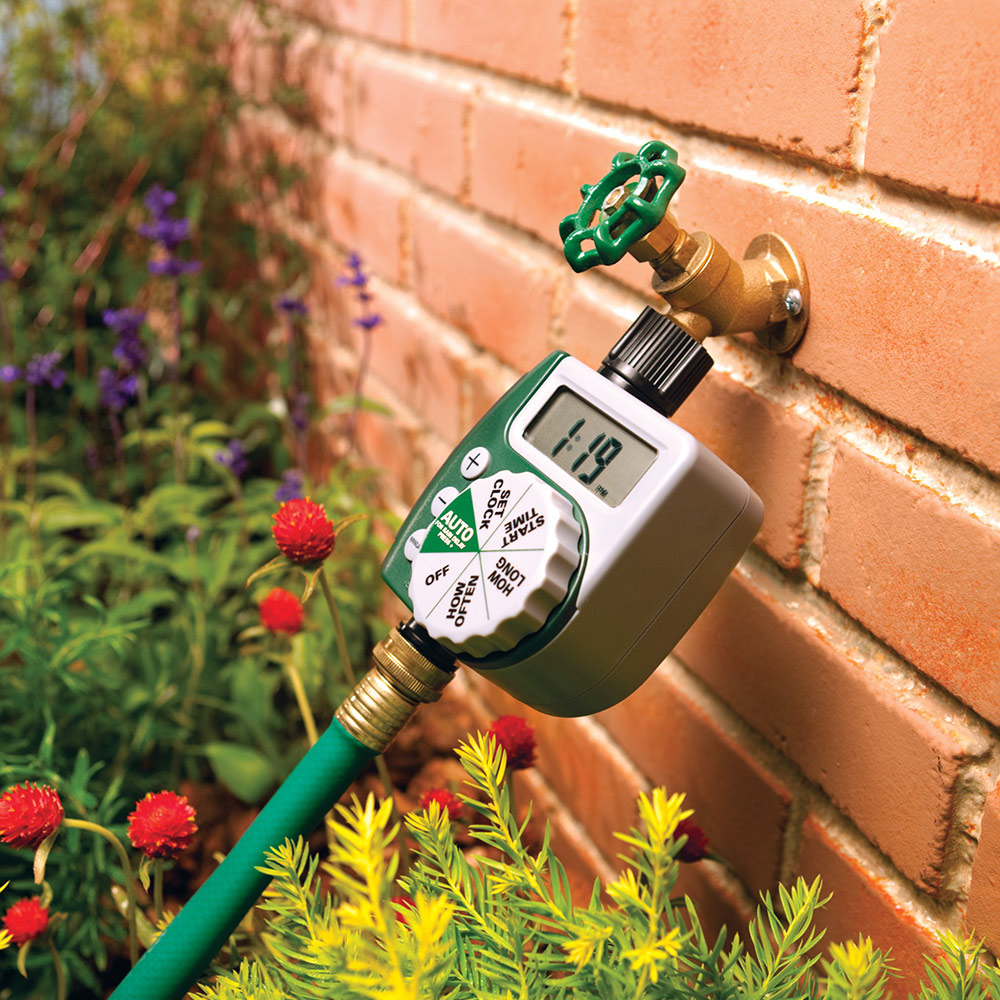
Last updated September 7, 2023
Irrigation timers allow you to program a number of variables into your automatic irrigation system, including which zones receive water and when, and which days your lawn is watered.
Timers range from simple devices to advanced computers, so there are plenty of options to consider. This guide highlights the different types of irrigation timers, along with program options and features.
Tip: Program your irrigation timer to follow local watering restrictions in areas with frequent droughts.
Table of Contents
Irrigation Timer Types
Zones and Programs
Efficiency Options
Smart Timers
Irrigation Timer Types
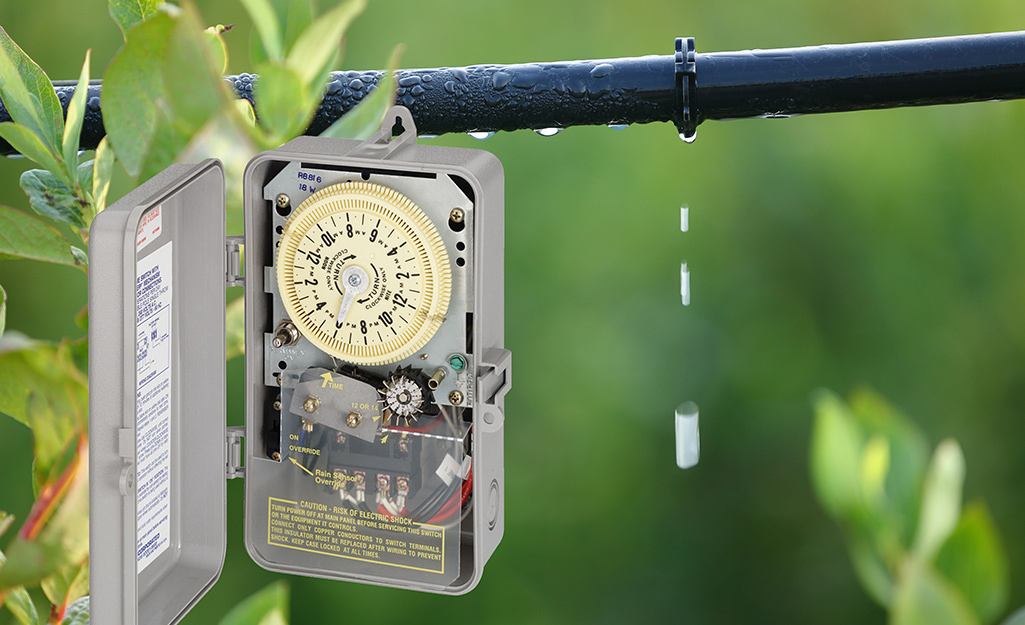
Irrigation system timers are hardwired into your water system on an interior or exterior wall. They plug in and run power to the system at the outdoor junction. These timers give the user precise control over multiple zones. Irrigation system timers have many of the same feature options as hose timers but require a higher skill level to maintain. They work with above ground and underground irrigation systems.
There are three basic types of irrigation timers: mechanical, electronic and hybrid timers.
- Basic mechanical timers must be set manually, but are very economical. Be sure to monitor your lawn closely and make adjustments when needed with mechanical timers.
- Electronic timers provide more options and features and can be controlled remotely from a computer or smartphone, allowing you to make adjustments in real time when the weather changes. Some electronic timers can control both regular and drip irrigation systems.
- Hybrids combine features of both with convenient controls and easy-to-read inputs. Hybrids also feature digital readouts and easy-to-use sliders for setting water duration.
For those looking for a more simple option, hose-installed irrigation timers are an easy-to-install option that offers a wide range of features and prices. Here are some of the main features and benefits of hose timers:
- They can be mechanical, battery-operated or electrical
- They attach to your outdoor tap or midline between two hoses
- They come in single or multiple-hose options. Multiple hose timers take one input water source and convert it to multiple water outputs, including drip irrigation systems
Zones and Programs
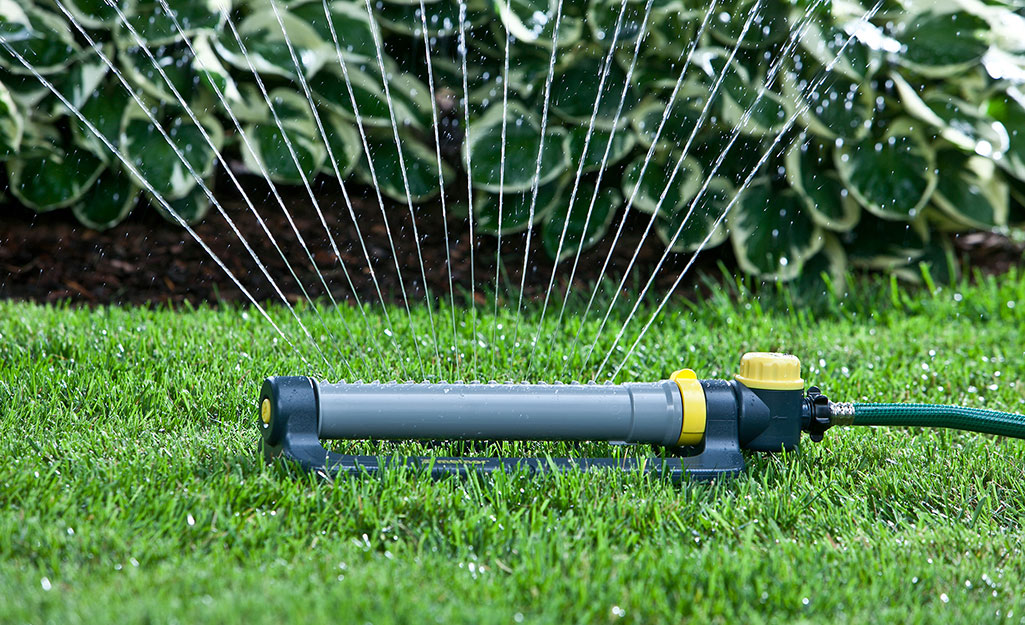
Irrigation systems run to a set number of zones. Also referred to as circuits, zones are sections that share the same water lines and irrigation valve. Areas are zoned to distribute water more evenly and precisely, according to how much water is needed.
For example, you can divide your yard into separate irrigation zones so areas of grass can be watered more often than areas with shrubs and trees. This works as a more efficient and valuable use of water.
Choose an irrigation system that can control the number of zones in your lawn.
Basic Irrigation Tips:
- A single valve works with a group of sprinkler heads to comprise a zone.
- Programs are watering schedules, which determine when, how frequently and how long your system is activated.
- Single program timers water all zones on the same day and are best for basic watering.
- Multiple programs cycle through specific zones to ensure adequate watering.
Efficiency Options
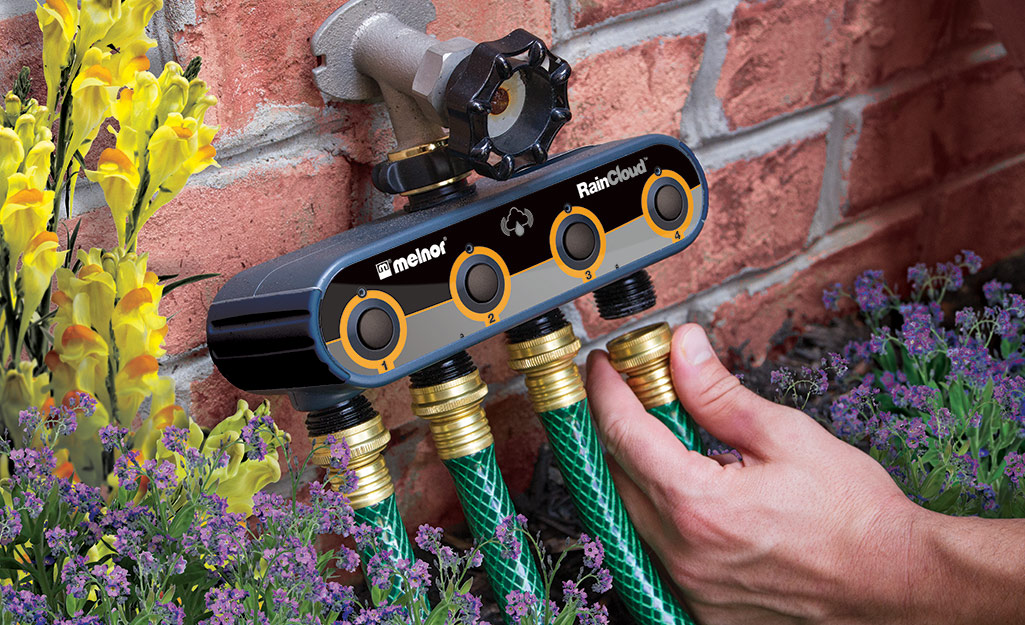
To make your watering experience more convenient, choose a timer with options such as a sunlight sensor, built-in calendar and more.
- If your timer is outdoors, shield it from the elements with a weather-resistant cabinet.
- A skip button allows you to skip watering a zone so you don’t have to reprogram the entire system.
- An interval feature allows you to set the number of days between watering.
- A built-in calendar lets you choose which days of the week you want to water. This is especially useful when following local watering restrictions.
- Sunlight sensors adjust water levels to compensate for evaporation on hot days, while moisture sensors shut down the watering on rainy days.
- Rain delay buttons let you turn off the system during storms for more efficiency.
- An odd/even setting is helpful for areas of the country where watering is restricted.
- A battery backup saves your settings during power outages, or if the primary battery dies, saving you from having to reprogram your settings.
- Look for irrigation control timers featuring the Watersense label. These models are built to reduce overwatering.
Smart Timers
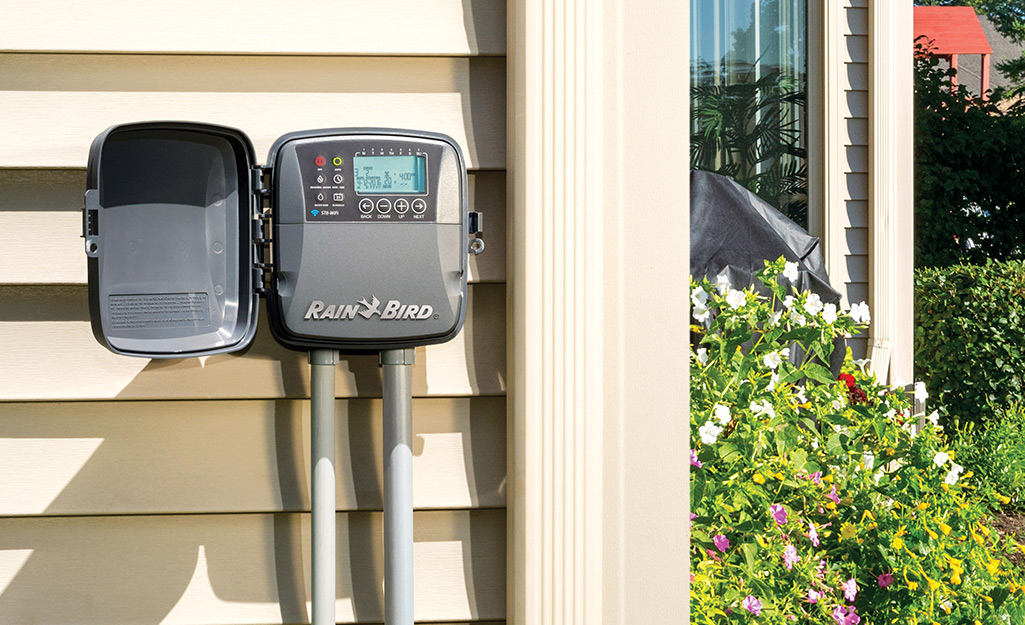
Smart timers can be used for a variety of intuitive tasks.
- Customize and control your yard watering schedule from phone, tablet or laptop.
- Adjust to the weather, seasons and water availability based on site conditions.
- Use specific yard details and advanced watering algorithms to create and optimize watering schedules, which helps save water and money.
- Connect to top smart home platforms (Amazon Alexa, Google Assistant, IFTTT, Nest).
- Receive real-time notifications and share access with contractors.
- Provide water usage reports.
An irrigation timer is a great way to automate watering and keep your landscape healthy. Use a smart timer to easily adjust watering levels to your specific climate and local watering restrictions. A smart timer can also provide usage reports to help keep you on top of your water consumption and anticipate bills.
Ready to start your project? The Home Depot delivers online orders when and where you need them.

